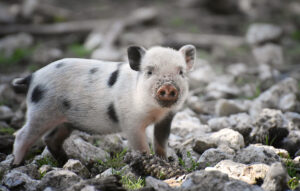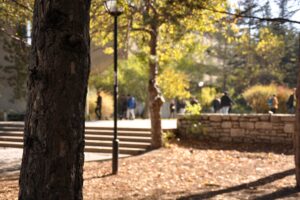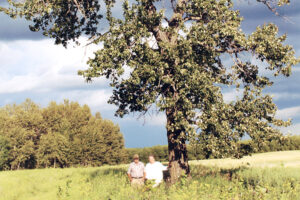By Naden Hewko – Macklin, Sask.
When my parents immigrated to Canada from Western Ukraine, they brought their traditions with them, including their observance of religious holidays like Christmas and Easter. I remember Easter was the most important celebration of their Ukrainian Catholic faith and it was preceded by six weeks of a strictly observed Lent.
We lived in a mixed faith district and dances were held during the winter months, but once Lent started we were not allowed to go. Often the school drama club would put on a play and we could attend, but we couldn’t stay for the dance that followed. Weddings were also never scheduled during Lent.
There were food restrictions too. Meat was restricted and fish (not considered meat by the church) was served every Wednesday and Friday. Dad would buy a barrel of salted herrings and he prepared them for eating by soaking in fresh water, changing it frequently over a couple of days. A dressing of vinegar, oil, and sliced onions was poured over the herring.
During the winter, chickens slowed down on egg production. As the days lengthened, they started to lay again and mother saved the eggs. She needed several dozen for the special Easter breads she baked. She made babka, a rich, tall bread with raisins, baked in round tins.
Another type was paska, though it did not have as many eggs in the dough. These braided breads were also baked in large round pans and were decorated with thin strips of dough forming a cross and petal shaped ornaments. We loved the smell of bread baking in the old wood burning stove.
A special stylus
Eggs were also needed for making pysanky, the intricately decorated Easter eggs used for gift giving or display. They were not for eating. Pysanky means ‘to write’ or ‘written upon’, and a special stylus was used to trace the designs on the raw egg and cover some part of it with wax, before it was dipped in dye.
This was a long process, sometimes done over several days. To make regular Easter eggs, krashanky, she boiled the eggs and we dipped them in assorted colours.
Onion skins made a lovely bronze color and beet juice dyed eggs a pretty pink. Some years, she bought the little tablets for colouring the eggs. We could eat the krashanky eggs on Easter Sunday after the church service.
Attending the Easter Church service was very important. Food served at the noon meal was taken to church in a basket covered with an embroidered cloth. The baskets of food were blessed after the service and served for the Easter meal with everyone expected to take a piece of every item.
Chocolate Easter eggs and rabbits were not a part of our early Easter traditions. It wasn’t until we were married and had children of our own that we introduced these Easter treats.



